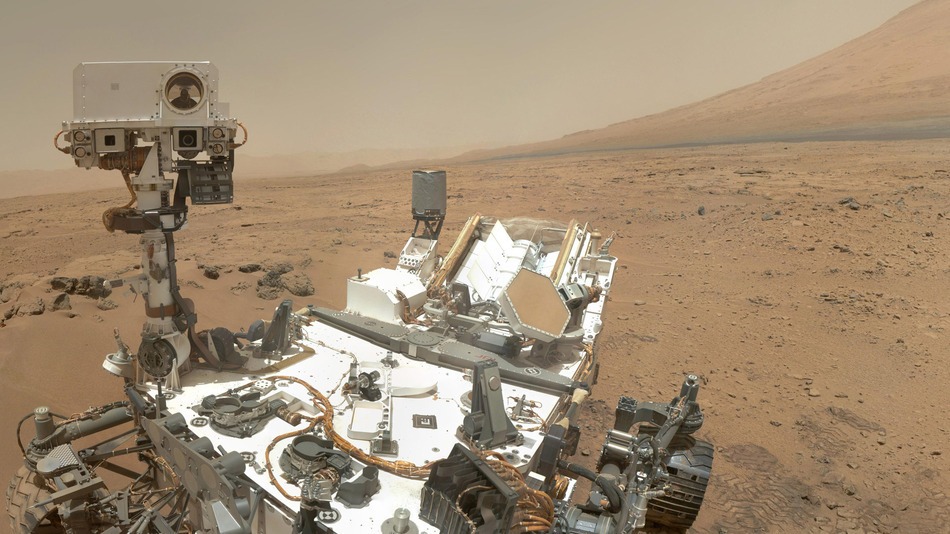
NASA’s Curiosity rover has just reached its third anniversary milestone on Mars, after landing in Gale crater on Aug. 5, 2012, and since then has made some incredible science discoveries, with more to come in the months and years ahead. NASA is celebrating this achievement and you can take part, too!
The Curiosity mission, like others before it, has helped to dramatically improve our understanding of Mars’ past—how it used to be much wetter than it is now, and how it changed over time to the cold, dry desert planet we see today. Curiosity landed in the huge Gale crater, which scientists thought was likely once a lake, with streams emptying into it, and Curiosity has confirmed that, in spades. This region on Mars used to be much more habitable by earthly standards than it is now. While Curiosity wasn’t designed to look for evidence of life itself, it could find out how potentially habitable this area was a long time ago, at least for microbes, and it has already done that, with much more exploring still to do.
The video below is an excellent overview of the mission so far:
So what are some of the major scientific discoveries so far? The most exciting and important findings so far include the following:
- Not long after first landing, Curiosity found the first evidence for ancient stream beds in the Yellowknife Bay region of Gale crater, close to the landing site. The now long-dry stream beds had been previously identified from orbit, but now Curiosity’s laboratory instruments confirmed that water did indeed flow here a long time ago, in shallow but fast-moving streams. Curiosity found gravel deposits where the streams had once emptied into the crater, similar both in appearance and mineralogy to stream bed gravel on Earth. The smooth, rounded pebbles appeared to have rolled downstream for a few miles. The “bedrock” here was a sedimentary conglomerate, made of many smaller fragments of rock cemented together.
- In relation to the evidence for flowing water, the SAM instrument suite on the rover found Mars’ present atmosphere to be enriched in the heavier forms (isotopes) of hydrogen, carbon, and argon, which indicated that Mars had lost much of its original atmosphere and water. The atmospheric gases and water escaped to space through the top of the atmosphere, a process which has also been observed directly by the MAVEN orbiter.
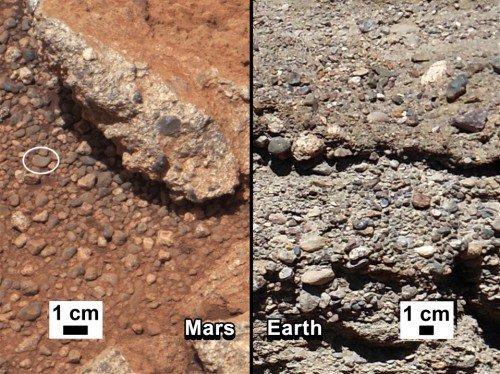
- As well as water, Curiosity confirmed that this region of ancient Mars had the chemistry necessary to support microbial life. Curiosity found sulfur, nitrogen, oxygen, phosphorus, and carbon—key ingredients necessary for life—in the sample of powder drilled from the Sheepbed mudstone rock in Yellowknife Bay. Clay minerals and low amounts of salt were also found, which suggested that the water there was fresh, not too acidic or salty, and perhaps even drinkable by human standards. Such an environment would have been ideal for any organisms, if they existed there.
- Organic molecules were also discovered in the same Sheepbed mudstone, which are the building blocks of life. This alone doesn’t prove there was life there, but does show that the necessary carbon ingredients for life were present.
- Another very interesting finding is that of methane in the Martian atmosphere by Curiosity, following previous observations of it by orbiters and Earth-based telescopes. The Tunable Laser Spectrometer within the SAM instrument detected the methane including a 10-fold increase over a couple of months. Methane can be produced either biologically or geologically on Earth, so confirming it on Mars would be evidence for either subsurface geological processes still occurring or biology, most likely underground as well.
- While en route to Mars, Curiosity experienced high levels of radiation in space: galactic cosmic rays (GCRs), from supernova explosions and other high-energy events outside the Solar System and solar energetic particles (SEPs), associated with solar flares and coronal mass ejections from the Sun. The levels are higher than NASA’s career limit for astronauts, but the data will help NASA design future spacecraft which would be safe enough for a human mission to Mars.
Meanwhile, Curiosity has recently been busy drilling again, this time into the rock target Buckskin, where other instruments have shown there to be high levels of silica and hydrogen in this and nearby rock outcrops. In Earth rocks, silica is very good at preserving organics, so mission scientists are interested in looking closer to see if more organic material can be found here. The grey color of the powder is similar to that seen in other drill holes, where the natural color of the subsurface rock isn’t obscured by reddish dust. Curiosity’s on-board laboratory will analyze the powdered drill samples to see what minerals or other material they contain.
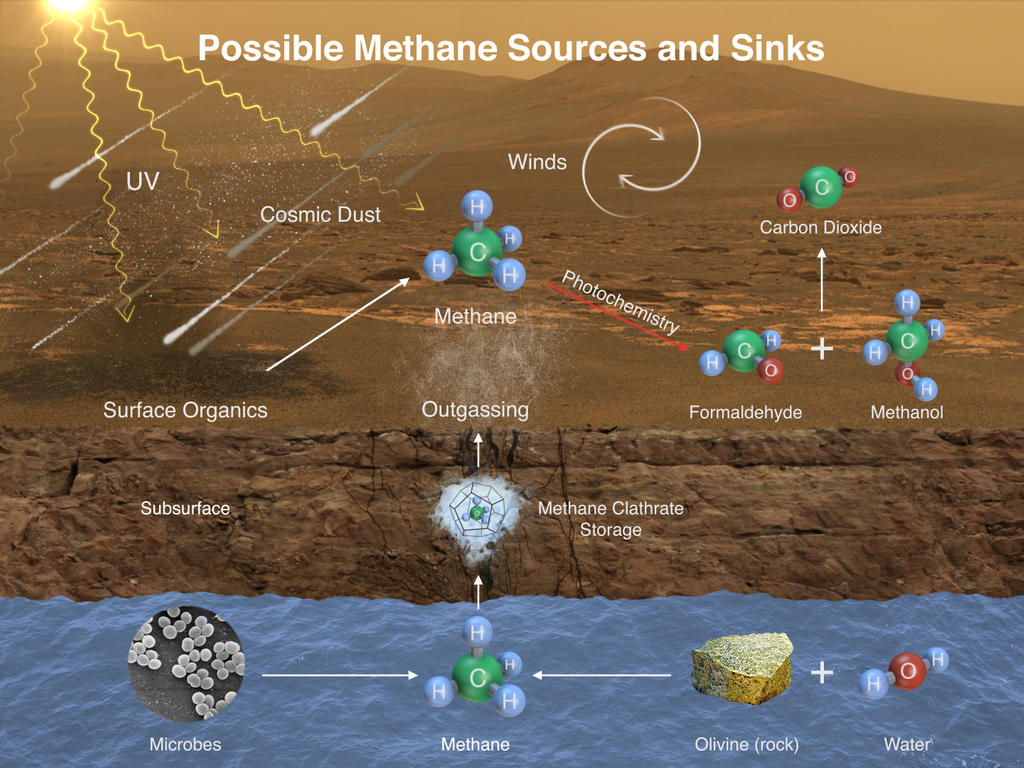
Curiosity also recently found evidence for an ancient continental crust on Mars, which may have been the precursor to plate tectonics like those on Earth. The mineralogical and chemical makeup of the rocks studied are similar to granitic continental crust rocks on Earth. The discovery is another indication of how Mars’ early history was similar to Earth’s in many ways.
Next, the rover will continue its journey closer to the foothills of Mount Sharp, where it is already on the outskirts. The lower slopes of the mountain are a geological goldmine, with layered buttes, mesas, and canyons reminiscent of the American southwest. Barring any accidents, the nuclear-powered rover should be able to keep exploring for at least several more years.
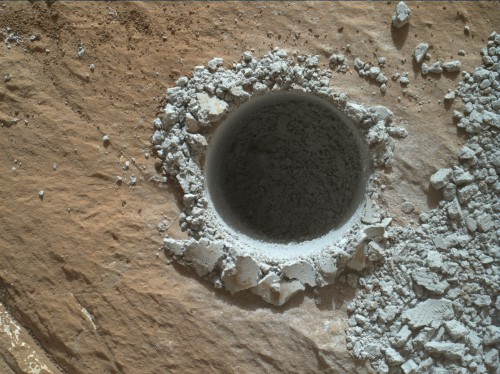
NASA has also unveiled two new online tools to help the public better explore Mars along with Curiosity.
Experience Curiosity allows viewers to journey along with the one-ton rover on its Martian expeditions. The program simulates Mars in 3-D based on actual data from Curiosity and NASA’s Mars Reconnaissance Orbiter (MRO), giving users first-hand experience in a day in the life of a Mars rover.
Mars Trek is a free, web-based application that provides high-quality, detailed visualizations of the planet using real data from 50 years of NASA exploration and allowing astronomers, citizen scientists, and students to study the Red Planet’s features.
Regarding Mars Trek, “This tool has opened my eyes as to how we should first approach roaming on another world, and now the public can join in on the fun,” said Jim Green, director of NASA’s Planetary Science Division in Washington. “Our robotic scientific explorers are paving the way, making great progress on the journey to Mars. Together, humans and robots will pioneer Mars and the solar system.”
“At three years old, Curiosity already has had a rich and fascinating life. This new program lets the public experience some of the rover’s adventures first-hand,” said Jim Erickson, the project manager for the mission at JPL.
Check here for much more coverage of the Curiosity mission by AmericaSpace. You can also download a detailed mission poster here or send Curiosity a “virtual postcard” to help celebrate!
More information about the entire Curiosity mission is also here.
Want to keep up-to-date with all things space? Be sure to “Like” AmericaSpace on Facebook and follow us on Twitter: @AmericaSpace
Missions » InSight »



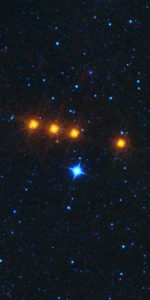
3 Comments
3 Pings & Trackbacks
Pingback:Curiosity marks 3rd anniversary on Mars with amazing science discoveries
Pingback:Smooth Sailing, Mr. O: 10 Years Since the Launch of the Mars Reconnaissance Orbiter « AmericaSpace
Pingback:First Successful Mars Landing Mission: 40 Years Since the Launch of Viking 1 « AmericaSpace